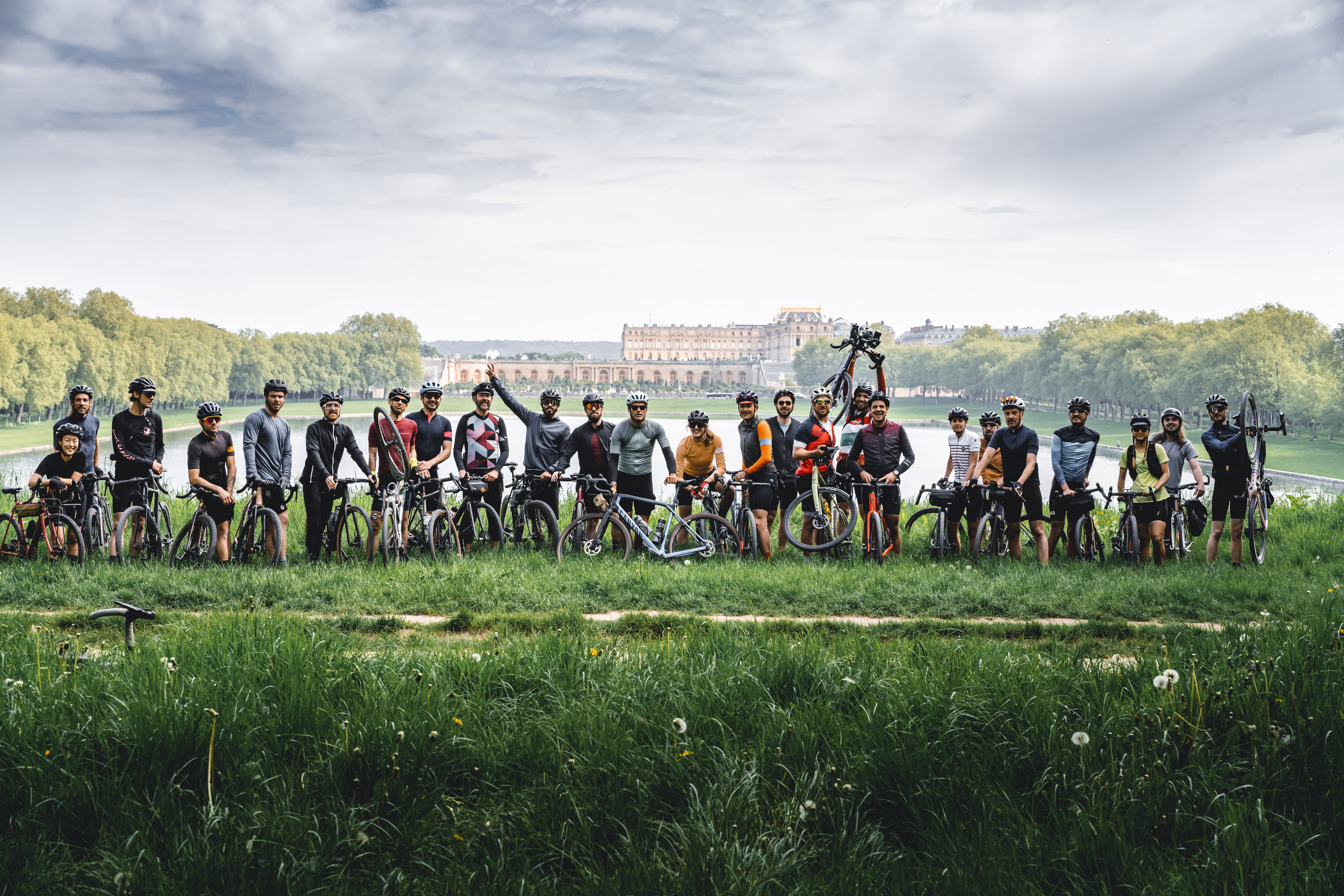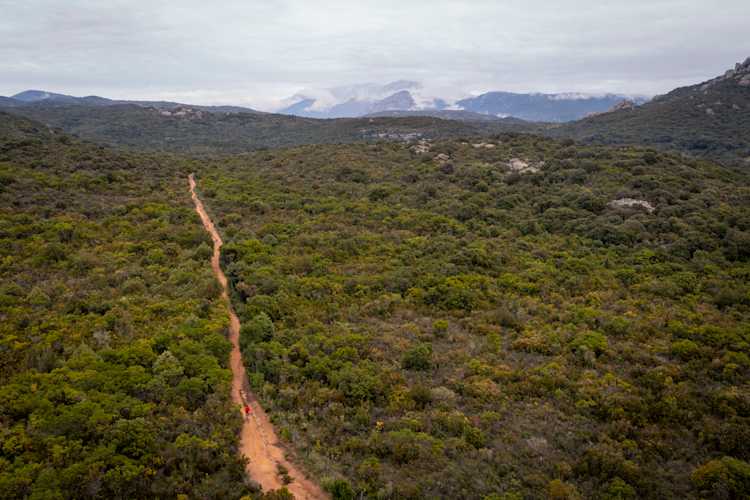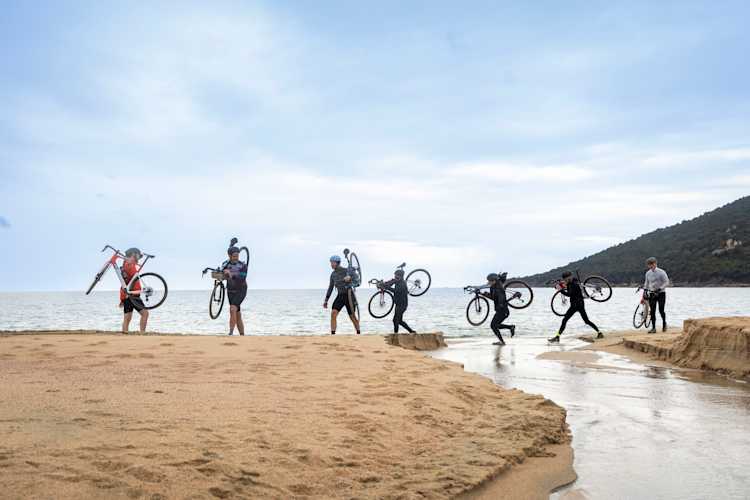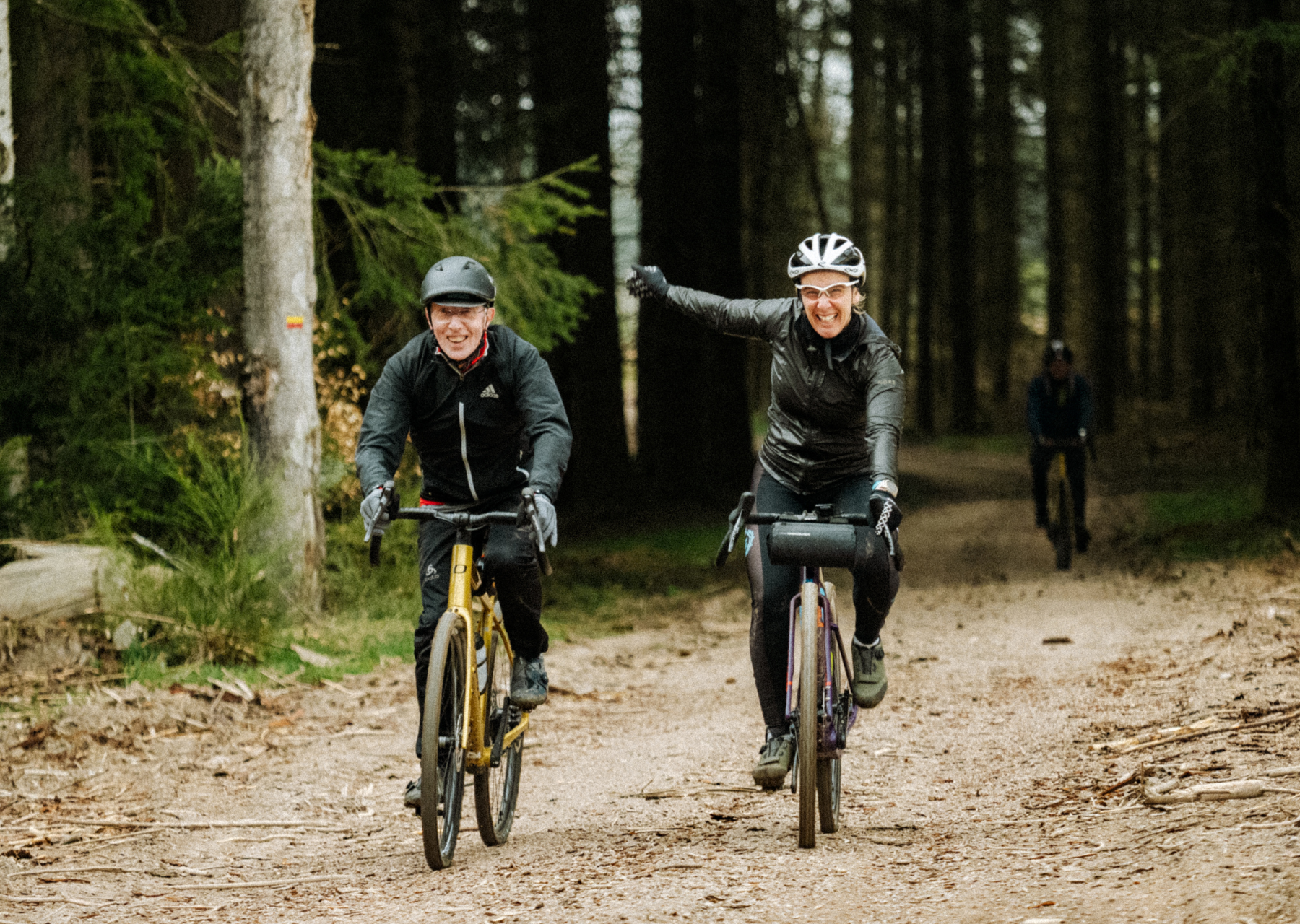Gravel vs Road, what’s the difference?
It’s not really news anymore that gravel is having it’s moment, with all kinds of bikes now available for all kinds of riding.
It’s where MTB meets road riding, for a do-it-all bike that can take on a large variety of terrain, with unrivalled versatility. A gravel bike can take you from your daily commute to a long distance trip, via any trail it can find in between. So is a gravel bike just another bike on the market??
The main technical differences
The Gravel Bike

Generally you’ll find a frame geometry that’s close to a road bike, but slightly elongated and higher at the front end. You’ll often find wider and flared handlebars, and there will be a much bigger clearance for wider tyres of 40-45mm and beyond. All of which make for a more comfortable ride, and more versatility all round.
Most manufacturers offer gravel bikes with a single or double chainring up front. The single chainring allows for more reactive gear changes on technical terrain, and no front derailleur means less maintenance, always good!

You’ll also find a fair few bike models made from titanium or steel for even more comfort and strength, materials that are no longer so popular for road bikes.
The Road Bike
With the aim of maximising performance and efficiency, a road bike is designed for speed, with aerodynamics and lightness the key factors. Tyres are between 23-28mm for the best power transfer on tarmac, with different frame geometries offered by the manufacturers optimised for various uses - endurance, climbing and time trials.

As always there’s plenty of crossover! You can find bikes that are destined for adventure, yet light and responsive enough for racing. With the appearance of more and more gravel races and events (about which you can read our recent article here), this part of the market will keep on growing.
So what’s this “Gravel Spirit?”

Gravel riders often talk about gravel having a different atmosphere to road riding, but what exactly does this mean?!

It’s hard to explain in just a few words, but it’s a state of mind, a sense of adventure, a desire to get out there in nature… these feelings and motivating factors seem to unite gravel riders. These common aims make for a more accessible and welcoming side of cycling, where perceived “rules” applied by road riders are quickly cast aside. Forget the obligatory white socks and lycra, you are welcome to wear whatever you like. Baggies or lycra, whatever you choose.

More and more women are being attracted to gravel by this open minded approach, and focus on adventure rather than competition. You’ll find a much wider section of society in the gravel community, not just MAMILs (middle aged men in lycra), though they are very welcome of course!
Which bike is best for a bike trip?

A gravel bike is perfect for bike trips as it covers all bases:
Freedom
- you can take any trail (well almost!) as well as sticking to the road. The bike can do it all and take you to lots of hidden spots en route. Where you want, when you want.
Comfort
- You’ll be spending all day on the bike and in the saddle and the hours will add up! You’ll be glad of the larger tyres to smooth out the vibrations and the more relaxed position.

Versatility
- the gravel bike takes it all in its stride, so you don’t need to be stuck on the busy main roads or avoid the old roads with potholes. Bike paths, forest trails, towpaths, even singletracks, it can do it all.
Solidity
- bikes take a hammering on any journey, and especially when loaded up with panniers, kit and extra weight. Having a bike that can withstand all the forces that it’s subjected to makes such a difference, especially if it’s easily repairable too.

Want to have a go?
If you’re still not sure about which gravel bike to get, or whether you’ll really like it that much, come try it out on one of our GravelUp trips. We’ve got trips from just a weekend to week long adventures so there’s something for everyone.
👉 Find out about our different bike trips here.


